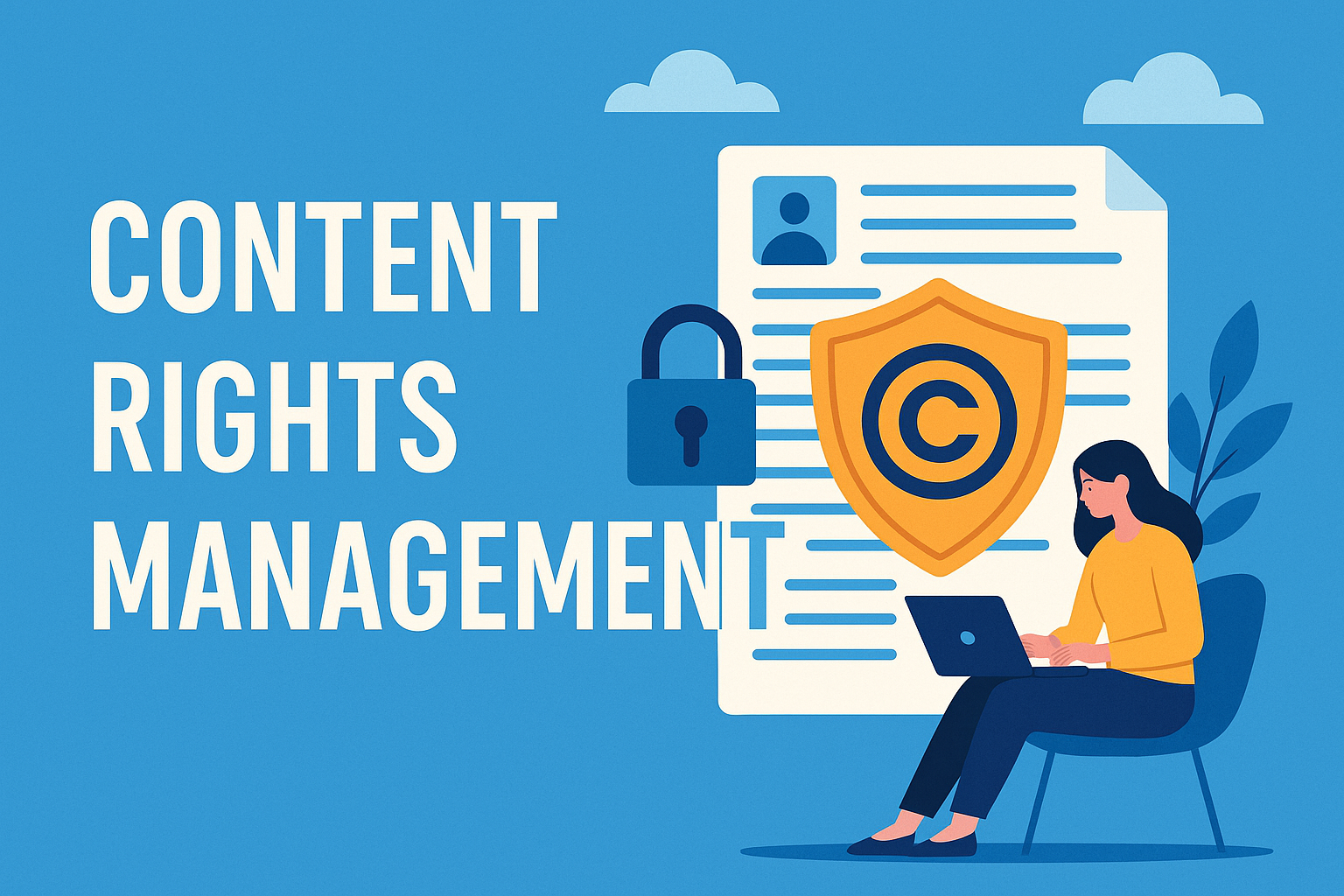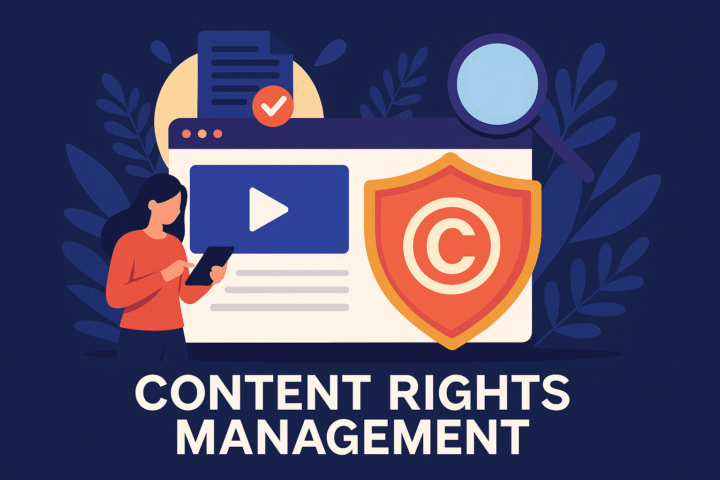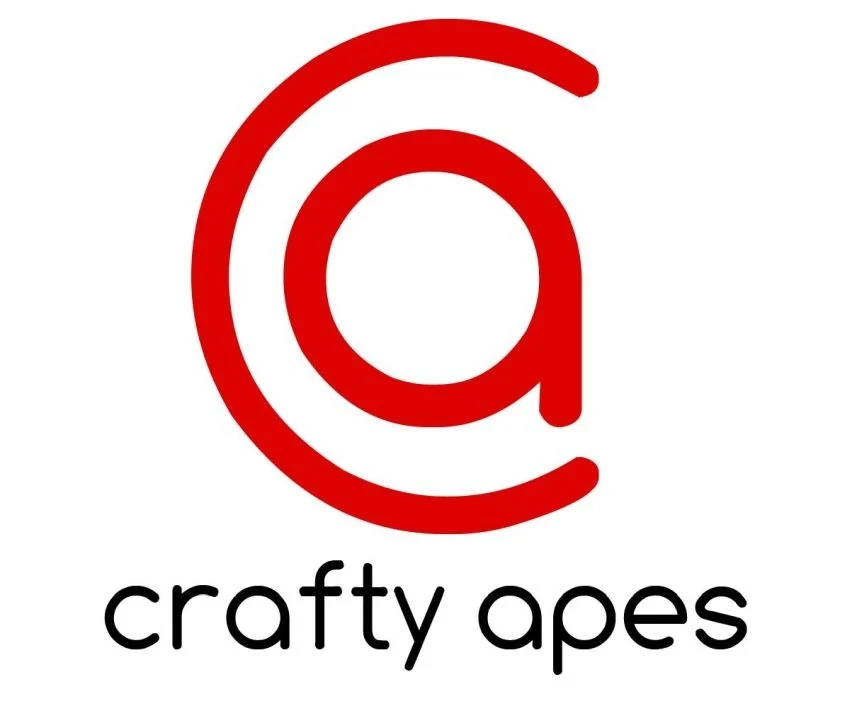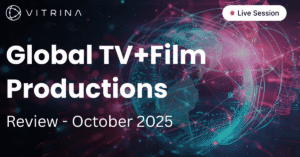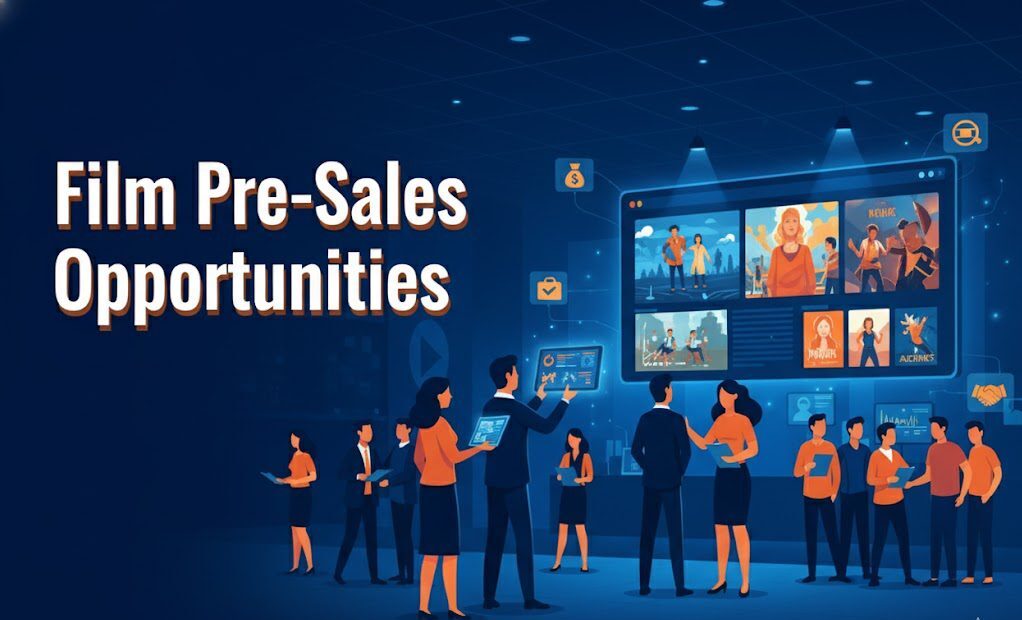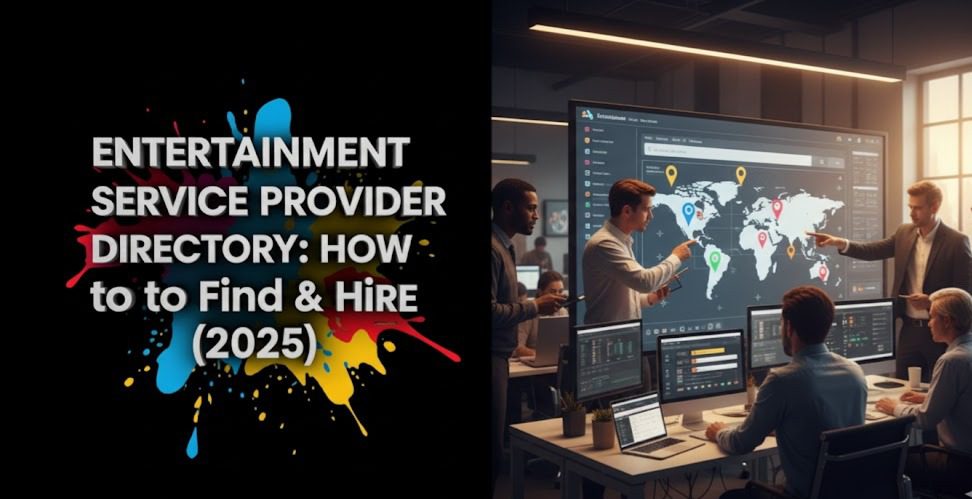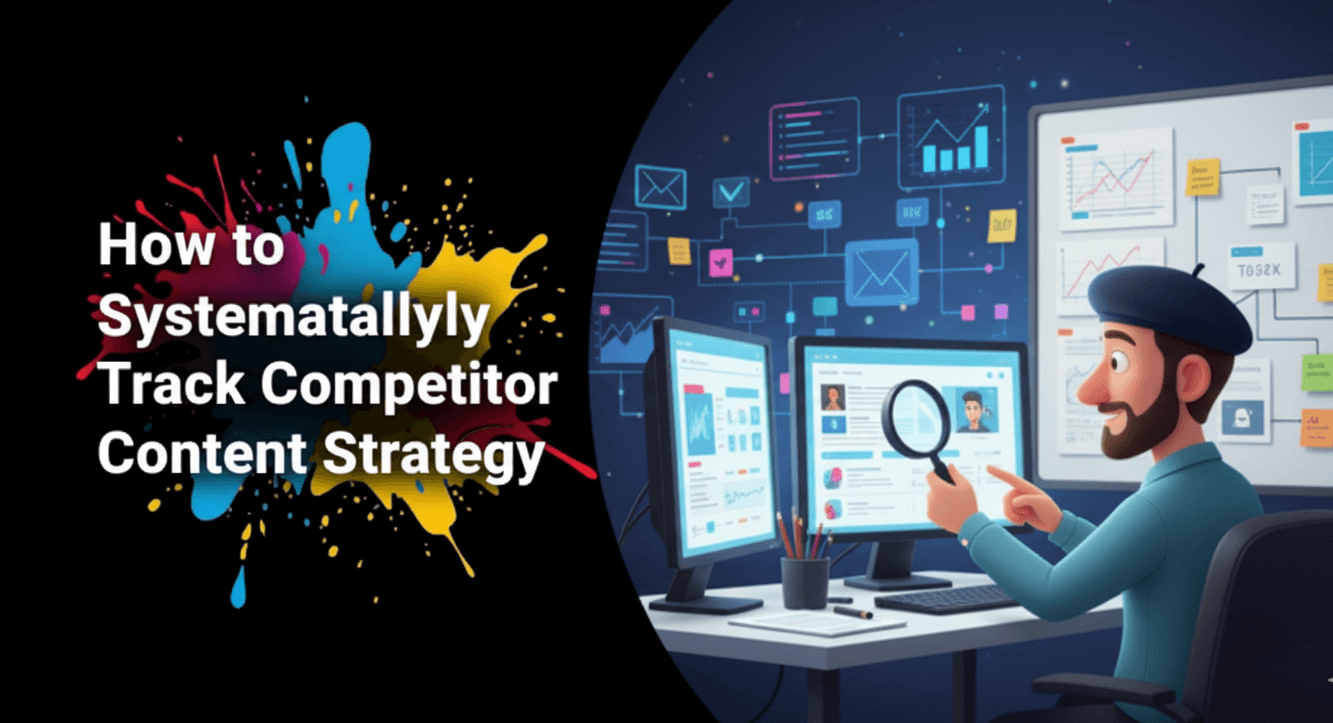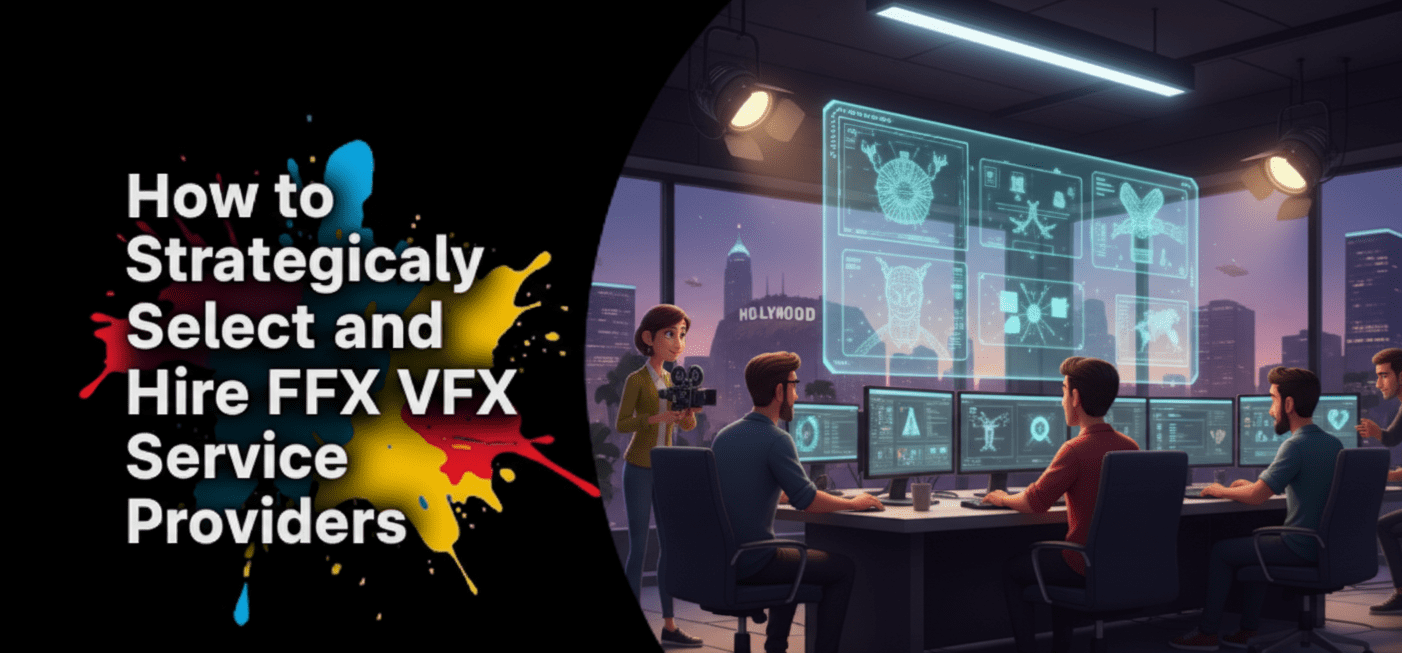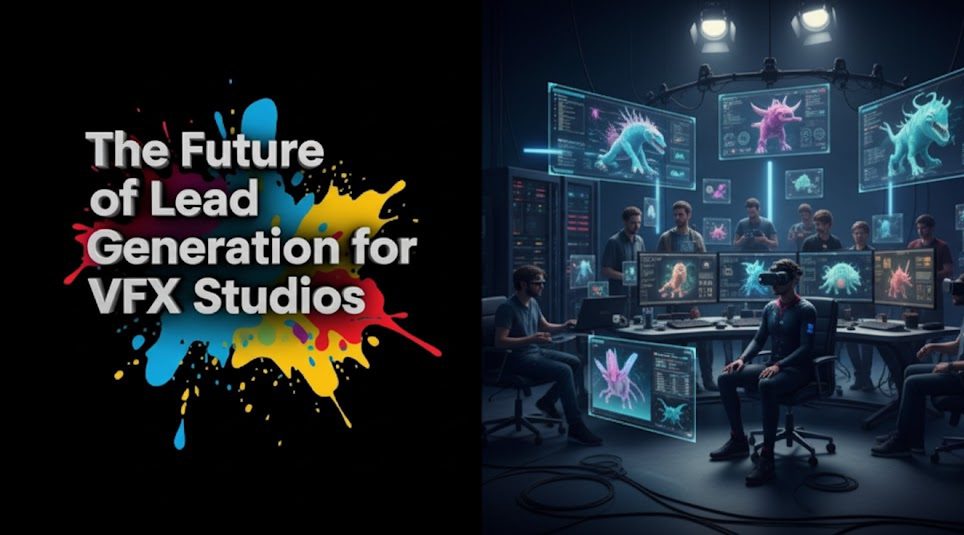Introduction
Welcome, content creators, distributors, and media professionals! In today’s fast-paced digital world, understanding and effectively managing your Content rights management is more critical than ever. If you’ve ever wondered how to protect your creative work, maximize its value, or navigate the complex web of licensing and distribution, you’re in the right place.
This article will break down the essentials of Content rights management, explore common challenges, and highlight how you can stay ahead. We’ll touch on everything from copyright basics to the latest tech trends, ensuring you leave with actionable insights. Let’s dive in and unlock the power of your content!
Key Takeaways
| Aspect | Description |
|---|---|
| Definition | Content rights management involves overseeing the legal rights associated with creative works, including how they are used, distributed, and monetized. |
| Importance | Crucial for protecting intellectual property, ensuring fair compensation, and maximizing the reach and revenue of content across various platforms. |
| Key Challenges | Global rights complexities, digital piracy, tracking royalties accurately, and managing diverse licensing agreements. |
| Solutions | Utilizing specialized software, understanding legal frameworks, adopting clear licensing strategies, and leveraging platforms like Vitrina for insights. |
| Future Trends | Increased use of AI for tracking and enforcement, blockchain for transparent rights ownership, and evolving models for streaming and digital content. |
Want to Maximize Your Content's Revenue?

Understanding the Landscape of Content Rights: Key Concepts
Navigating Content rights management means getting familiar with some key ideas. It’s not as scary as it sounds! Think of it like learning the basic rules of a game before you can play to win. Understanding these concepts helps you protect your work and make smart deals.
What are the key types of content rights every creator should know?
When we talk about content rights, several types come into play. It’s like having different keys for different doors. Here are the main ones:
- Copyright: This is the big one! Copyright gives the creator of an original work exclusive rights to control its use and distribution. This includes rights to reproduce, distribute, perform, display, and create derivative works.
- Licensing Rights: This is where you grant permission to others to use your copyrighted content under specific conditions, often in exchange for a fee or royalty. Think of a TV network licensing a show to stream on their platform.
- Distribution Rights: These rights determine who can distribute your content, where (geographical territories), for how long (term), and through what channels (theatrical, TV, streaming, physical media).
- Performance Rights: Specifically for music and dramatic works, these rights govern the public performance of the content.
- Mechanical Rights: These relate to the reproduction of musical compositions in formats like CDs, digital downloads, or streams.
- Synchronization Rights (Sync Rights): Needed when music is combined with visual media, like a song in a movie or a commercial.
Understanding these helps you know what you’re negotiating when you’re looking to sell or license your content. For example, Vitrina’s Project Tracker can help you see which projects are in development and might require various types of content rights acquisitions.
The crucial role of intellectual property in valuing and protecting content.
Intellectual Property (IP) is the lifeblood of the media and entertainment industry. Your content – films, music, scripts, games – is all IP. It’s an asset, just like a building or a piece of equipment, but it’s intangible. Protecting this IP through Content rights management is what gives it value. If anyone could use your hit TV series for free, its commercial value would plummet. Securing and managing your IP rights allows you to:
- Control its exploitation and earn revenue.
- Prevent others from stealing or misusing your creative efforts.
- Build a brand and reputation around your unique content.
- Attract investment and partnerships.
Essentially, your IP is your business. Strong Content rights management is how you ensure that business thrives.
| Right Type | Primary Function | Example |
|---|---|---|
| Copyright | Establishes ownership and control over original works. | A screenwriter owns the copyright to their script. |
| Licensing Rights | Grants permission for specific uses of content. | A game developer licenses music for their video game. |
| Distribution Rights | Determines how and where content is made available. | A film studio grants a company rights to release a movie in Europe. |
| Performance Rights | Covers public performance of music/drama. | A radio station pays royalties to play songs. |
Challenges in Modern Content Rights Management: What to Watch Out For
Managing content rights today isn’t always a walk in the park. The digital age has brought amazing opportunities, but also some tricky challenges. Knowing these hurdles can help you prepare and find the right solutions for effective Content rights management.
Navigating the complexities of global content rights and territorial restrictions.
Content now easily crosses borders, but rights often don’t. What you can show in the United States might not be cleared for Japan or Brazil. This is due to territorial rights, where licenses are granted for specific geographic regions. Managing these varying agreements, windowing strategies (when content is released in different formats/territories), and ensuring compliance in each market is a huge task. A film might have dozens of different distribution deals worldwide, each with its own terms. Keeping track of this global puzzle is a major challenge in Content rights management.
- Different laws in different countries.
- Language and cultural adaptation considerations.
- Currency exchange and payment complexities.
- Enforcing rights across multiple jurisdictions.
The ongoing battle with digital rights management (DRM) and piracy.
Digital Rights Management (DRM) refers to technologies used to control access to and usage of digital content. While DRM aims to protect content from piracy, it’s a constant cat-and-mouse game. Pirates are always trying to find ways around DRM, and overly restrictive DRM can sometimes frustrate legitimate users. Finding the right balance between protecting content and ensuring a good user experience is tough. Piracy itself remains a massive drain on revenue for content creators and distributors, making effective Content rights management and anti-piracy measures crucial. This includes not just technological solutions, but also legal action and consumer education.
Common pitfalls in royalty management and ensuring fair compensation.
When your content is used, you expect to get paid, right? That’s where royalty management comes in. But it’s often complex. Tracking usage across countless platforms, calculating royalties based on different agreements (e.g., per stream, per download, percentage of revenue), and ensuring timely and accurate payments can be a nightmare. Common pitfalls include:
- Inaccurate Reporting: Data from platforms can be incomplete or incorrect.
- Complex Deal Terms: Agreements with lots of variables make calculations hard.
- Delayed Payments: Chasing down what you’re owed takes time and effort.
- Lack of Transparency: It can be hard to see exactly how royalties are being calculated.
These issues can lead to lost revenue and strained relationships with partners. Solid Content rights management systems are needed to tackle these challenges head-on. For those looking to buy or sell content, understanding these pitfalls is key when making deals, and platforms like Vitrina can help connect buyers and sellers, facilitating clearer negotiations.
| Challenge Area | Specific Issue | Impact on Content Rights Management |
|---|---|---|
| Global Rights | Varying laws and territorial licenses | Increased complexity in distribution and compliance |
| DRM & Piracy | Unauthorized copying and distribution | Revenue loss and devaluation of content |
| Royalty Management | Inaccurate tracking and payment delays | Financial discrepancies and creator dissatisfaction |
| Contract Complexity | Ambiguous terms in licensing agreements | Disputes and difficulty in enforcement |
Effective Strategies and Solutions for Content Rights Management
Okay, we’ve talked about the challenges. Now for the good stuff: how to tackle them! Effective Content rights management isn’t just about avoiding problems; it’s about unlocking your content’s full potential. With the right strategies and tools, you can protect your work and boost your earnings.
What are some best practices for robust content rights management?
Building a strong foundation for your Content rights management involves several key practices. Think of these as your golden rules:
- Know Your Rights: Understand exactly what rights you own and what rights you’re granting or acquiring. Read those contracts carefully!
- Register Your Copyrights: Formal registration provides stronger legal protection, especially in cases of infringement.
- Keep Meticulous Records: Maintain a clear, organized database of all your content, associated rights, licenses, and agreements. This is your central source of truth.
- Use Clear Contracts: Ensure all licensing and distribution agreements are unambiguous, detailing scope, territory, term, usage, and payment terms.
- Monitor Usage: Actively track how and where your content is being used to spot unauthorized uses or ensure compliance with licenses.
- Stay Informed: Keep up with changes in copyright law and industry practices, especially concerning new technologies and platforms.
- Conduct Regular Audits: Periodically review your rights portfolio and agreements to identify any gaps, conflicts, or opportunities.
Leveraging content rights management software and platforms effectively.
Manually tracking hundreds of licenses across dozens of territories? That’s a recipe for headaches and errors. This is where Content rights management software and platforms come to the rescue. These tools can automate many tedious tasks, providing a centralized system to:
- Store and manage rights information and contracts.
- Track content usage and distribution.
- Calculate and manage royalties.
- Generate reports and analytics.
- Flag upcoming expiries or conflicts.
Choosing the right software depends on your needs—whether you’re a small independent creator or a large media house. The key is to pick a solution that integrates well with your workflow and provides the data you need. Exploring platforms like Vitrina’s solution can also provide valuable market intelligence to inform your rights strategies, helping you understand where demand for certain types of content lies.
Smart content licensing strategies for maximum reach and revenue.
Licensing is where the magic happens in terms of monetizing your content. A smart licensing strategy can significantly boost your income and get your content seen by more people. Consider these approaches:
- Windowing: Strategically releasing content across different platforms and territories over time (e.g., theatrical, then premium VOD, then subscription streaming, then broadcast).
- Territorial Licensing: Selling rights to different distributors in different countries or regions to maximize global coverage.
- Platform-Specific Deals: Negotiating unique terms for different types of platforms (e.g., SVOD, AVOD, FAST channels).
- Bundle Deals: Licensing a package of content rather than individual titles, which can be attractive to buyers.
- Non-Exclusive vs. Exclusive: Weighing the benefits of granting exclusive rights (often higher fees) versus non-exclusive rights (wider potential reach).
The best strategy depends on your content type, target audience, and business goals. Being flexible and creative with your licensing can open up new revenue streams you hadn’t considered.
| Strategy/Tool | Benefit for Content Rights Management | Example of Use |
|---|---|---|
| Clear Contracts | Reduces ambiguity and potential disputes. | Specifying exact territories and duration of a license. |
| CRM Software | Automates tracking, improves accuracy. | System automatically flags an expiring license. |
| Rights Audits | Identifies untapped revenue or compliance issues. | Discovering unexploited rights for a specific market. |
| Strategic Windowing | Maximizes revenue over content lifecycle. | Releasing a film theatrically before it hits streaming. |
Is Your Content Reaching its Full Potential?

The Future of Content Rights Management: What’s Next?
The world of Content rights management is always evolving, especially with new technologies popping up. Staying ahead of the curve means keeping an eye on these future trends. They could change how we create, share, and protect content in big ways.
Innovations on the horizon: AI and Blockchain in rights management.
Two game-changing technologies are making waves in Content rights management: Artificial Intelligence (AI) and Blockchain.
AI can help by:
- Automated Content Recognition: Identifying where your content is being used online, even in modified forms, to detect piracy or track licensed use.
- Predictive Analytics: Analyzing data to forecast content demand, optimize pricing for licenses, or identify potential infringement risks.
- Smart Contracts: Automating parts of the licensing process, like royalty payouts when certain conditions are met.
Blockchain offers potential for:
- Transparent Ownership Records: Creating a secure, decentralized ledger of content ownership and rights, making it harder to dispute.
- Automated Royalty Distribution: Smart contracts on a blockchain could automatically distribute payments to rights holders whenever content is used.
- Enhanced Security: Protecting rights data from tampering and unauthorized access.
While still developing, these technologies promise a more efficient, transparent, and secure future for managing content rights. It’s exciting stuff!
Evolving trends in streaming, digital content distribution, and their impact on rights.
The way we watch movies and listen to music has totally changed, right? Streaming is king, and new digital platforms pop up all the time. This directly impacts Content rights management:
- More Complex Licensing: Deals now need to cover various streaming models (SVOD, AVOD, FAST) and interactive features.
- Micro-Licensing: The rise of short-form content (like on TikTok or YouTube Shorts) creates a need for new, faster ways to license small bits of content, like music clips.
- Direct-to-Consumer (DTC) Models: More creators and studios are launching their own platforms, meaning they manage rights directly with their audience.
- Global Platform Deals: Large streaming services often want global rights, which can simplify things but may also mean negotiating very complex, high-value deals.
These trends mean rights agreements are becoming more detailed, and the ability to track and manage usage across a fragmented digital landscape is more important than ever for successful Content rights management.
How Vitrina supports navigating the complexities of content rights.
Navigating the global content marketplace and understanding who owns what, who is distributing where, and what kind of deals are being made is a massive undertaking. This is where a platform like Vitrina becomes invaluable. While not a direct rights management software in terms of legal contract management or royalty processing, Vitrina provides critical market intelligence that supports robust Content rights management strategies. By offering insights into global content availability, distribution deals, and company activities, Vitrina helps rights holders and buyers make informed decisions. For example, you can identify potential licensing partners in new territories, understand the distribution footprint of competitive content, or track where specific types of content are in demand. This data-driven approach, which can be explored further via Vitrina’s solutions, empowers professionals to negotiate better deals, identify opportunities, and ultimately manage their content rights more effectively in a complex global ecosystem.
| Future Trend | Potential Impact on CRM | How to Prepare |
|---|---|---|
| AI in CRM | Automated tracking, better piracy detection, predictive insights. | Explore AI-powered tools and understand their capabilities. |
| Blockchain for Rights | Transparent ownership, automated royalties, enhanced security. | Monitor blockchain developments and pilot projects in media. |
| Evolving Streaming Models | More complex licensing terms, need for flexible agreements. | Stay updated on platform changes, adapt licensing strategies. |
| Growth of Micro-Content | Demand for faster, scalable micro-licensing solutions. | Investigate tools for managing rights for short-form content. |
Conclusion
And there you have it! We’ve journeyed through the essentials of Content rights management, from what it is and why it’s so vital, to the challenges and exciting future possibilities. Protecting your creative work, ensuring you’re fairly paid, and maximizing its reach isn’t just about rules and regulations; it’s about empowering your creativity and business to thrive in a competitive global market. By understanding your rights, leveraging the right tools and strategies, and keeping an eye on the future, you can take firm control of your content assets. Remember, your content has value – effective Content rights management helps you unlock it.
Ready to explore how market intelligence can supercharge your content strategy? Understanding the global landscape is key to effective rights management. Visit Vitrina today to see how our data can help you make smarter decisions about your content.
Frequently Asked Questions
Copyright is the inherent legal right that creators have in their original works, granting them exclusive control over use and distribution. Think of it as owning the property. Licensing is the act of granting permission (a license) to someone else to use that copyrighted work under specific terms and conditions, often for a fee. So, copyright is ownership; licensing is giving permission to use.
Small creators can start by educating themselves on basic copyright principles, always using clear (even if simple) written agreements for any collaborations or when allowing others to use their work. Registering copyrights for key works is affordable. They can also use cloud storage for record-keeping and explore free or low-cost contract templates (ensuring they are suitable for their jurisdiction). The key is being organized and proactive from the start regarding their Content rights management.
Digital Rights Management (DRM) refers to technologies used by hardware manufacturers, publishers, copyright holders, and individuals to control the use, modification, and distribution of copyrighted works. Examples include encryption and digital watermarks. Unfortunately, no DRM system is completely foolproof; determined individuals or groups often find ways to circumvent DRM protections. It’s more of a deterrent and a hurdle than an unbreakable barrier.
International copyright is governed by a series of treaties and conventions, like the Berne Convention. While these provide a framework, copyright laws are still territorial, meaning they are specific to each country. This means a work might have different levels of protection or different rules for fair use in different countries. This makes global Content rights management complex, requiring careful attention to local laws when distributing content internationally.


